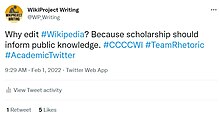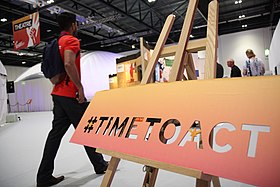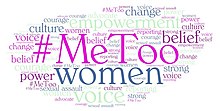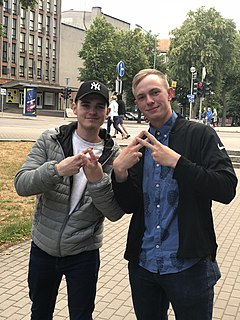The symbol # is known variously in English-speaking regions as the number sign, hash, or pound sign. The symbol has historically been used for a wide range of purposes including the designation of an ordinal number and as a ligatured abbreviation for pounds avoirdupois – having been derived from the now-rare ℔.

Christopher Reaves Messina is an American blogger, product consultant and speaker who is the inventor of the hashtag as it is currently used on social media platforms. In a 2007 tweet, Messina proposed vertical/associational grouping of messages, trends, and events on Twitter by the means of hashtags. The hashtag was intended to be a type of metadata tag that allowed users to apply dynamic, user-generated tagging, which made it possible for others to easily find messages with a specific digger theme or content. It allowed easy, informal markup of folksonomy without need of any formal taxonomy or markup language. Hashtags have since been referred to as the "eavesdroppers", "wormholes", "time-machines", and "veins" of the Internet.
How do you feel about using # (pound) for groups. As in #barcamp [msg]?
Social search is a behavior of retrieving and searching on a social searching engine that mainly searches user-generated content such as news, videos and images related search queries on social media like Facebook, LinkedIn, Twitter, Instagram and Flickr. It is an enhanced version of web search that combines traditional algorithms. The idea behind social search is that instead of ranking search results purely based on semantic relevance between a query and the results, a social search system also takes into account social relationships between the results and the searcher. The social relationships could be in various forms. For example, in LinkedIn people search engine, the social relationships include social connections between searcher and each result, whether or not they are in the same industries, work for the same companies, belong the same social groups, and go the same schools, etc.
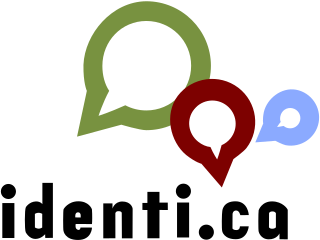
identi.ca is a free and open-source social networking and blogging service based on the pump.io software, using the Activity Streams protocol. Identi.ca stopped accepting new registrations in 2013, but continues to operate alongside several other pump.io-based hosts provided by E14N which continue to accept new registrations.
Since the launch of Twitter on July 15, 2006, there have been many notable uses for the service in a variety of environments, including political, economic, social and cultural uses. As users tweet their messages on Twitter, they encourage other people to respond and engage in online discussions as well as offline activities. User engagement on Twitter is usually measured with likes, replies and retweets and is a form of social power. After the 2022 acquisition of Twitter by Elon Musk, the platform rebranded to the name X; however, it is still widely referred to as Twitter.
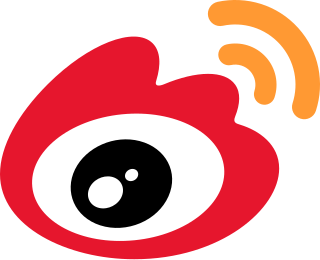
Weibo, previously Sina Weibo, is a Chinese microblogging (weibo) website. Launched by Sina Corporation on 14 August 2009, it is one of the biggest social media platforms in China, with over 582 million monthly active users as of Q1 2022. The platform has been a huge financial success, with surging stocks, lucrative advertising sales and high revenue and total earnings per quarter. At the start of 2018, it surpassed the US$30 billion market valuation mark for the first time.
Reblogging is the mechanism in blogging which allows users to repost the content of another user's post with an indication that the source of the post is another user.

Instagram is an American photo and video sharing social networking service owned by Meta Platforms. It allows users to upload media that can be edited with filters, be organized by hashtags, and be associated with a location via geographical tagging. Posts can be shared publicly or with preapproved followers. Users can browse other users' content by tags and locations, view trending content, like photos, and follow other users to add their content to a personal feed. A Meta-operated image-centric social media platform, it is available on iOS, Android, Windows 10, and the web. Users can take photos and edit them using built-in filters and other tools, then share them on other social media platforms like Facebook. It supports 32 languages including English, Hindi, Spanish, French, Korean, and Japanese.
Shadow banning, also called stealth banning, hell banning, ghost banning, and comment ghosting, is the practice of blocking or partially blocking a user or the user's content from some areas of an online community in such a way that the ban is not readily apparent to the user, regardless of whether the action is taken by an individual or an algorithm. For example, shadow-banned comments posted to a blog or media website would be visible to the sender, but not to other users accessing the site.
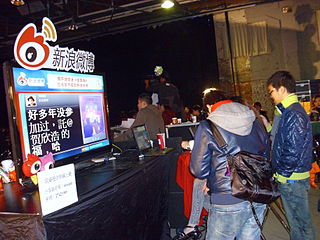
Social media and television have a number of connections and interrelationships that have led to the phenomenon of Social Television, which is an emerging communication digital technology that centers around real-time interactivity involving digital media displayed on television. The main idea behind Social Television is to make television consumption a more active content experience for audiences. In the 2010s, social media platforms and websites allowed for television shows to be accessed online on a range of desktop and mobile computer devices, smartphones and smart TVs that are still evolving today in the 2020s. Alongside this, online users can use social media websites to share digital video clips or excerpts from TV shows with fellow fans or even share an entire show online. Many social media websites enable users to post online comments on the programs—both negative and positive—in a variety of ways. Viewers can actively participate while watching a TV program by posting comments online, and have their interactions viewed and responded to in real time by other viewers. Technologies such as smartphones, tablets, and laptop computers allow viewers to watch downloaded digital files of TV shows or "stream" digital files of TV shows on a range of devices, both in the home and while on the go. In the 2020s, many television producers and broadcasters encourage active social media participation by viewers by posting "hashtags" on the TV screen during shows. These hashtags enable viewers to post online comments about the show, which may either be read by other social media users, or even, in some cases, displayed on the screen during the show.
The term Twitter bomb or tweet bomb refers to posting numerous posts with the same hashtags and other similar content, including @messages, from multiple accounts, with the goal of advertising a certain meme, usually by filling people's post feeds with the same message, and making it a "trending topic" on X. This may be done by individual users, fake accounts, or both.
Networked feminism is a phenomenon that can be described as the online mobilization and coordination of feminists in response to sexist, misogynistic, racist, and other discriminatory acts against minority groups. This phenomenon covers all possible definitions of what feminist movements may entail, as there have been multiple waves of feminist movements and there is no central authority to control what the term "feminism" claims to be. While one may hold a different opinion from another on the definition of "feminism", all those who believe in these movements and ideologies share the same goal of dismantling the current patriarchal social structure, where men hold primary power and higher social privileges above all others.

Stocktwits is a social media platform designed for sharing ideas between investors, traders, and entrepreneurs. Founded in 2008 by Howard Lindzon and Soren McBeth, it introduced the use of the cashtag, a way to group discussions around a stock symbol preceded by a dollar sign. Stocktwits eventually became a standalone network where users share market sentiment, ideas, and strategies in real-time.
Black Twitter is an internet community largely consisting of the Black diaspora of users in the United States and other nations on Twitter, focused on issues of interest to the black community. Feminista Jones described it in Salon as "a collective of active, primarily African-American Twitter users who have created a virtual community proving adept at bringing about a wide range of sociopolitical changes." A similar Black Twitter community arose in South Africa in the early 2010s.

Hashtag activism refers to the use of social media hashtags for Internet activism. The hashtag has become one of the many ways that social media contributes to civic engagement and social movements. The use of the hashtag on social media provides users with an opportunity to share information and opinions about social issues in a way that others (followers) can interact and engage as part of a larger conversation with the potential to create change. The hashtag itself consists of a word or phrase that is connected to a social or political issue, and fosters a place where discourse can occur. Social media provides an important platform for historically marginalized populations. Through the use of hashtags these groups are able to communicate, mobilize, and advocate for issues less visible to the mainstream.
Throwback Thursday or #TBT is an internet trend used among social media platforms such as Instagram, Twitter and Facebook. On a Thursday, users will post nostalgia-inducing pictures – from a different era of their life, accompanied by the hashtag #TBT or #ThrowbackThursday. Many posts reflect positive moments, or funny, old clothes, hair and styles. Throwback Thursday can be attributed to any photo in one's past memories whether it be childhood, old relationships, past vacations, old songs, or anything that gives one a "happy and nostalgic feeling."
A social bot, also described as a social AI or social algorithm, is a software agent that communicates autonomously on social media. The messages it distributes can be simple and operate in groups and various configurations with partial human control (hybrid) via algorithm. Social bots can also use artificial intelligence and machine learning to express messages in more natural human dialogue.
Social profiling is the process of constructing a social media user's profile using his or her social data. In general, profiling refers to the data science process of generating a person's profile with computerized algorithms and technology. There are various platforms for sharing this information with the proliferation of growing popular social networks, including but not limited to LinkedIn, Google+, Facebook and Twitter.
Brain Tumor Social Media (#BTSM) is a patient and care partner-run, grassroots Twitter community. The Twitter account @BTSMchat hosts bi-monthly tweet chats for the #BTSM community and consistently trends among the top 15 of disease-related tweet chats. A study published in 2020 revealed the hashtag was most commonly used by brain tumor patients (33.13%), along with patient advocacy organizations (7.01%), care partners (4.63%), and clinicians (3.63%) and researchers (3.37%) specializing in brain tumors and brain cancers.
